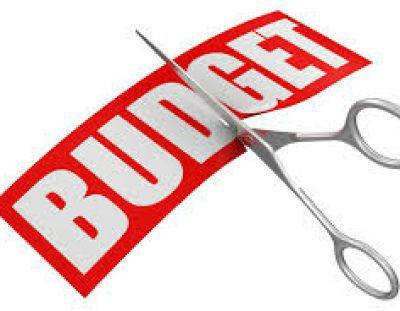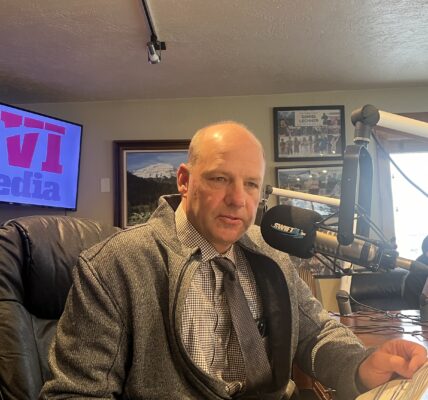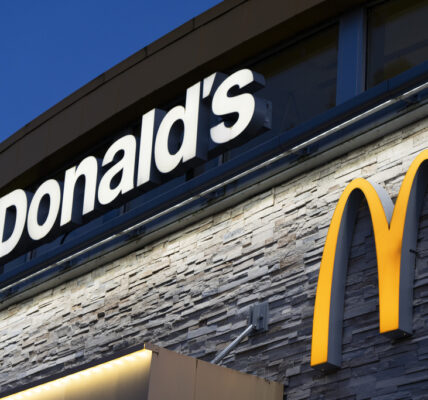By Dustin Bleizeffer, WyoFile.com
The Joint Appropriations Committee will begin reviewing Gov. Mark Gordon’s budget proposal this week as the Legislature prepares its own priorities for the upcoming budget session that begins Feb. 14.
Both Gordon and legislative leadership have signaled a “standard” approach to the budget that stabilizes appropriations after several budget-cutting cycles and adjustments, pointing to higher-than-anticipated state revenue, improving revenue projections and billions in federal recovery, stimulus and infrastructure funds being funneled to the state.
Disagreement remains, however, over whether to restore funding for higher education, health and mental health services or sock away unanticipated revenues in savings. Gordon’s budget proposal attempts to do both, he said, by directing federal stimulus dollars toward the Department of Health and restoring $7 million to the University of Wyoming and $4.5 million to community colleges, while setting aside $454 million into the Legislative Stabilization Reserve Account.
The fact that Gordon has identified nearly a half-billion dollars for savings is a sign that Wyoming isn’t broke, and lawmakers should focus on restoring appropriations to vital services rather than building up savings, Rep. Andy Schwartz (D-Jackson) said.
“For the [state] agencies, after the big cuts we did in the supplemental budget, [Gordon’s budget proposal is] kind of flat,” Schwartz said. “I am not comfortable with that. I think that we need to be looking where we need to restore funding, especially in Health and Human Services and the Department of Health.”
Gordon described his budget proposal as “frugal” — $2.3 billion for the 2022-2023 biennium compared to the current $2.8 billion two-year budget. Lawmakers approved a $4.1 billion budget in 2010.
Initial forecasts in 2020 projected a $1.5 billion budget shortfall for the 2022-2023 biennium. Revenue projections have since been revised upward by $845 million through fiscal year 2024, according to the Consensus Revenue Estimating Group’s October 2021 report. Several billion dollars flowing to Wyoming from the American Rescue Plan Act and the Infrastructure Investment and Jobs Act will also factor heavily into this year’s budget discussions.
“We have done what we can to be able to conserve Wyoming’s standard budget dollars,” Gordon said during a Nov. 15 press conference highlighting his budget proposal. “And wherever we can, we’ve been able to replace [state appropriations] to a degree with some of the federal funding.
“I have proposed investing $454 million into the Legislative Stabilization Reserve Account [savings] in order to prevent future draconian cuts,” Gordon continued. “My goal is to ensure that we are prepared to endure future revenue challenges.”
Both the executive and legislative branches acknowledge the state’s outsized reliance on volatile fossil fuel markets and the one-time nature of federal stimulus funds. The Biden administration’s climate and fossil fuel policies also present an existential threat to Wyoming’s economic outlook, Gordon said.
“I don’t think anybody in Wyoming is suffering under any misconception about this [federal] administration, which has a single-mindedness about trying to remove fossil fuels,” Gordon said. “Those obviously are a major portion of our revenue streams.”
Wyoming’s K-12 and higher-education institutions will play a vital role in helping Wyoming adapt to changing economic conditions, Gordon said, adding that restoring appropriations for education is a recognition that the series of recent budget cuts have pushed several education institutions to the brink of no longer qualifying for accreditation.
He proposed $1.8 billion for the state’s School Foundation Program, the primary fund for supporting K-12 schools, including $36.3 million to support the first year of an external cost adjustment. A legislative committee advanced a proposal for a $25 million cost adjustment in October in recognition of Wyoming’s slipping status in competitive wages for educators.
Lawmakers deferred a suite of maintenance spending to avoid further budget cuts in recent years, but that’s no longer a viable strategy, Gordon said.
“This year, we need to make sure that we return to a more appropriate practice of using general funds for major maintenance and we need to start catching up on the work we put off last year,” Gordon said. “Deferring maintenance too long will ultimately cost us more.”
Lawmakers must also grapple with staffing shortages at the Department of Corrections, which has struggled to compete with higher wages in neighboring states, Gordon said.
Wyoming has trimmed its budget by 44% over the past decade, and there isn’t much room for further cuts without damaging institutions and getting less of a return on the dollars it does spend, Wyoming Taxpayers Association Executive Director Ashley Harpstreith said.
Gordon’s $2.3 billion proposal is “a very balanced budget,” she said. “It’s very flat, it’s very conservative and it’s very honest.”
Unfortunately, however, it also represents a continuation of the boom-and-bust cycle that Wyoming’s been tied to for decades, she said. Only this time, the temporary injection of revenue is coming from federal stimulus spending rather than a boom in energy development.
“Until we stabilize our tax structure, this is what we have to do,” Harpstreith said. “We have to be very conservative and just be very wary of maintenance costs, because if we’re going to be beholden to commodities and go up and down on that roller coaster, the maintenance of effort is super hard.”
The combination of significant budget cutting followed by a windfall of federal stimulus dollars will likely result in intense competition among state agencies making a case to restore at least portions of their past budget amounts, as well as for matching dollars to take advantage of federal stimulus spending, Harpstreith said.
“It’s going to be very interesting to see who comes out of the woodwork to fight for how bad they’ve been cut for these [federal] funds coming in, and then the creative solutions they come up with for how to sustain it,” Harpstreith said. “The [state revenues] right now are not there to sustain [a higher level of spending] until our tax structure changes to support the cost of services.”
Increasing or broadening sources of tax revenue likely remains elusive yet a focal point of budget talks, Harpstreith added.
Federal stimulus dollars will play a significant role in restoring some level of past state appropriations and help invest in basic infrastructure and services, Schwartz said, and the first place he’ll look for state dollars to help leverage those funds is Gordon’s proposed $454 million in savings.
“I’m the one Democrat on the House Appropriations Committee,” Schwartz said. “So, you know, it’ll be a negotiation.”






